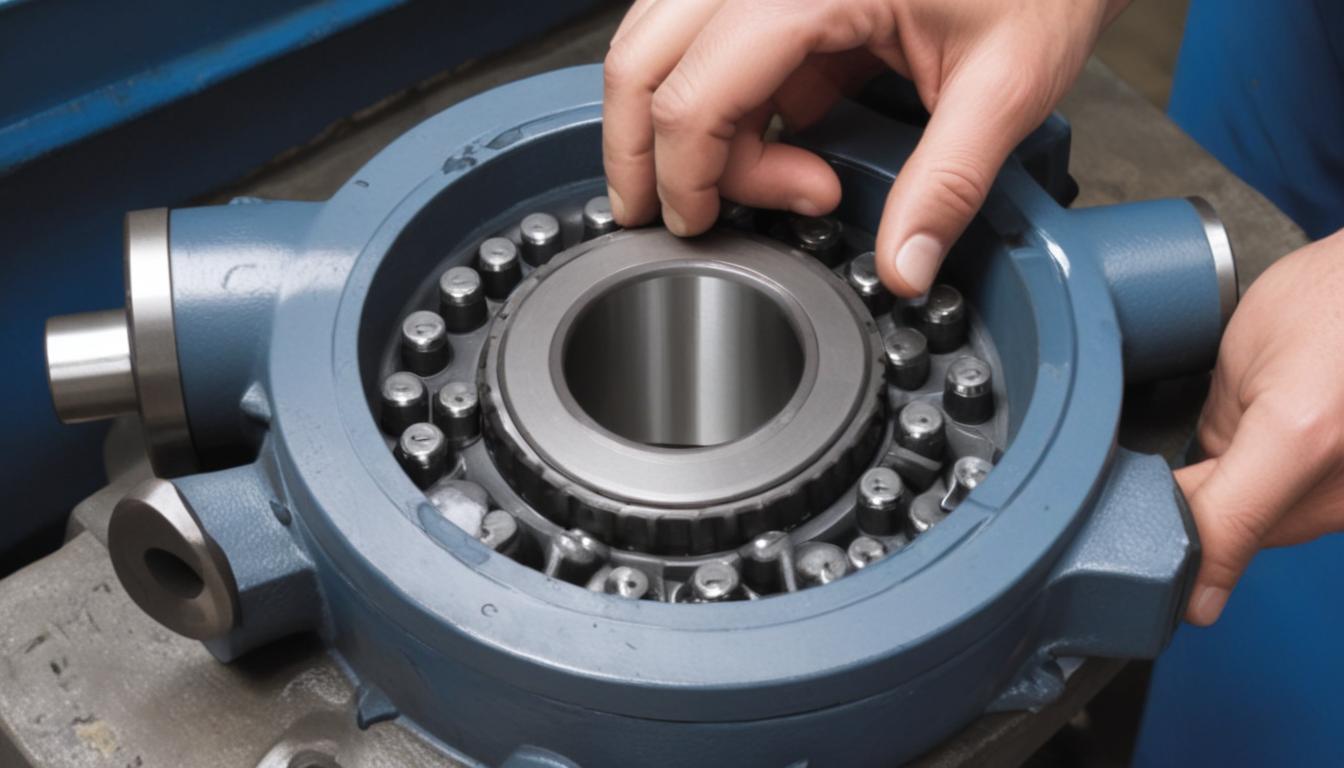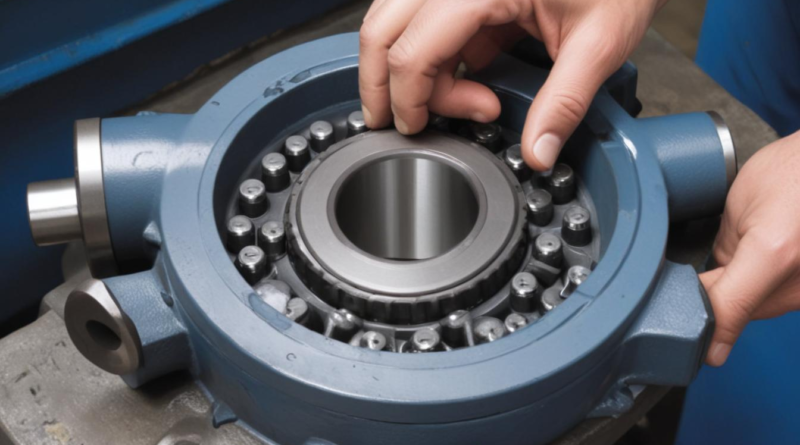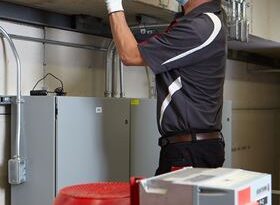how to perform pump bearing maintenance
Pump systems rely on various bearing types to ensure smooth and efficient operation. Understanding these types is crucial for effective pump bearing maintenance and selecting the appropriate components for specific applications.
Ball Bearings are among the most common types used in pumps. They consist of balls that swivel between two races, allowing for high-speed rotation with minimal friction. These bearings are ideal for applications requiring precision and where loads are primarily radial.
Roller Bearings use cylindrical or tapered rollers instead of balls, providing greater load-bearing capacity. They are suitable for heavy-duty applications where the pump must handle substantial radial and axial loads.
Sleeve Bearings, also known as plain bearings, operate without rolling elements. Instead, they use a sliding motion between the bearing surface and the shaft. Sleeve bearings are favored for their simplicity and ability to operate quietly, making them ideal for low-speed applications.
Magnetic Bearings employ magnetic fields to levitate the shaft, eliminating physical contact between moving parts. This type of bearing offers exceptionally low friction and wear, enabling high-speed operation and reduced maintenance requirements.
Thermal Bearings are designed to withstand high temperatures and are typically used in applications where heat generation is a concern. These bearings are constructed from materials that can endure thermal stress, ensuring longevity and performance under extreme conditions.
| Bearing Type | Load Capacity | Speed Capability | Maintenance Needs | Common Applications |
|---|---|---|---|---|
| Ball Bearings | Moderate | High | Regular lubrication and inspection | Small to medium pumps, precision machinery |
| Roller Bearings | High | Medium | Periodic lubrication, monitoring for wear | Heavy-duty industrial pumps |
| Sleeve Bearings | Low to moderate | Low to medium | Minimal maintenance, occasional lubrication | Low-speed and quiet operations |
| Magnetic Bearings | Variable | Very high | Low maintenance, monitoring of magnetic fields | High-speed and precision pumps |
| Thermal Bearings | Moderate to high | Variable | Specialized maintenance for thermal resistance | Pumps operating in high-temperature environments |
Implementing the correct pump bearing maintenance procedures involves selecting the appropriate bearing type based on the specific operation requirements. Here are some essential tips to consider:
- Assess Load Requirements: Determine the radial and axial loads the pump will encounter to choose a bearing with adequate load capacity.
- Consider Operational Speed: High-speed applications benefit from ball or magnetic bearings, while lower speeds may be suitable for sleeve or roller bearings.
- Evaluate Environmental Conditions: Select bearings that can withstand the operating temperature and any exposure to corrosive substances.
- Plan for Maintenance: Opt for bearing types that align with your maintenance capabilities and schedule to ensure longevity and reliability.
By carefully evaluating these factors, technicians can ensure optimal performance and extend the lifespan of pump systems through effective pump bearing maintenance.
Safety precautions
Ensuring the safety of personnel and equipment during pump bearing maintenance is paramount. Adhering to established safety protocols helps prevent accidents and prolongs the lifespan of the pump system. The following precautions should be meticulously followed:
- Lockout/Tagout (LOTO) Procedures: Before commencing any maintenance work, ensure that the pump system is completely shut down and isolated from its power source. Implement LOTO procedures to prevent accidental energization or startup during maintenance.
- Personal Protective Equipment (PPE): Wear appropriate PPE, including safety gloves, goggles, and protective clothing, to shield against potential hazards such as chemical exposure, flying debris, and accidental contact with moving parts.
- Proper Tool Usage: Utilize the correct tools for disassembling and handling pump components. Using the wrong tools can cause damage to the bearings or other parts, leading to unsafe conditions.
- Handling of Lubricants and Chemicals: Store and handle all lubricants and maintenance chemicals in accordance with the manufacturer’s guidelines. Use compatible containers and avoid mixing different substances to prevent chemical reactions or spills.
- Awareness of Moving Parts: Always assume that components may still be in motion. Keep hands and limbs clear of rotating shafts and other moving elements to avoid injury.
- Ventilation: Ensure adequate ventilation when performing maintenance in enclosed spaces to prevent the accumulation of fumes from lubricants or cleaning agents.
- Training and Competency: Only trained and authorized personnel should perform pump bearing maintenance. Proper training ensures that maintenance procedures are carried out safely and effectively.
- Inspection of Work Area: Before starting maintenance, inspect the work area for any potential hazards such as leaks, electrical issues, or structural weaknesses that could compromise safety.
Implementing these safety precautions as part of your pump bearing maintenance procedures not only protects workers but also ensures that maintenance activities are conducted efficiently and without incident. Regularly reviewing and updating safety protocols in line with industry standards and organizational policies is essential for maintaining a safe maintenance environment.
Inspection procedures
Conducting thorough inspections is a critical component of effective pump bearing maintenance. Regular inspection procedures help identify wear, misalignment, and other issues before they lead to significant failures. The following guidelines outline the essential steps and techniques for inspecting pump bearings:
- Visual Inspection:
- Examine the bearing surfaces for signs of wear, scoring, or pitting.
- Check for any visible cracks or deformities in the bearing housing.
- Inspect seals and shields for integrity and proper installation.
- Look for evidence of contamination, such as dirt or debris, which can compromise bearing performance.
- Temperature Monitoring:
- Use infrared thermometers or thermal cameras to monitor bearing temperatures during operation.
- Compare temperature readings against manufacturer specifications to detect overheating.
- Track temperature trends over time to identify gradual issues.
- Vibration Analysis:
- Deploy vibration sensors to measure the operational vibrations of the pump.
- Analyze vibration frequency patterns to detect imbalances, misalignments, or bearing defects.
- Establish baseline vibration levels and perform regular comparisons to identify anomalies.
- Lubrication Examination:
- Inspect lubricant levels to ensure they are within specified ranges.
- Assess lubricant condition for signs of degradation, contamination, or insufficient lubrication.
- Verify that lubrication points are receiving adequate lubricant as per maintenance schedules.
- Alignment Checks:
- Use precision alignment tools to ensure that the pump and motor shafts are correctly aligned.
- Adjust alignments as necessary to minimize undue stress on the bearings.
- Regularly verify alignment after performing maintenance tasks that might affect it.
| Inspection Technique | Purpose | Frequency |
|---|---|---|
| Visual Inspection | Identify surface wear, contamination, and physical damage | Monthly |
| Temperature Monitoring | Detect overheating and thermal anomalies | Weekly |
| Vibration Analysis | Detect imbalances, misalignments, and bearing defects | Quarterly |
| Lubrication Examination | Ensure proper lubricant levels and condition | Bi-weekly |
| Alignment Checks | Maintain correct shaft alignment to reduce bearing stress | Annually |
Implementing these inspection procedures as part of your routine pump bearing maintenance can significantly enhance the reliability and longevity of your pump systems. Additionally, consider the following tips to optimize your inspection process:
- Maintain Detailed Records: Keep comprehensive logs of all inspections, including findings, actions taken, and any adjustments made. This documentation aids in tracking the health of the bearings over time and facilitates informed decision-making.
- Use Advanced Diagnostic Tools: Invest in modern diagnostic equipment, such as handheld vibration analyzers and thermal imaging cameras, to improve the accuracy and efficiency of inspections.
- Train Personnel: Ensure that maintenance staff are adequately trained in the latest inspection techniques and understand the significance of each inspection step.
- Schedule Regular Maintenance: Adhere to a consistent maintenance schedule to prevent overlooking critical inspection tasks and to address issues promptly.
- Analyze Trends: Use data from inspections to identify patterns or recurring issues, enabling proactive measures to prevent future failures.
By adhering to these structured inspection procedures and incorporating best practices, organizations can effectively manage their pump bearings, minimizing downtime and extending the operational life of their equipment.
Lubrication techniques
 Proper lubrication is a cornerstone of effective pump bearing maintenance, ensuring smooth operation and prolonging the lifespan of both bearings and the pump system as a whole. Implementing the correct lubrication techniques minimizes friction, reduces wear, and prevents overheating, thereby enhancing overall pump reliability. The following sections outline essential lubrication techniques, types of lubricants, and best practices to optimize your maintenance procedures:
Proper lubrication is a cornerstone of effective pump bearing maintenance, ensuring smooth operation and prolonging the lifespan of both bearings and the pump system as a whole. Implementing the correct lubrication techniques minimizes friction, reduces wear, and prevents overheating, thereby enhancing overall pump reliability. The following sections outline essential lubrication techniques, types of lubricants, and best practices to optimize your maintenance procedures:
Types of Lubricants
Choosing the right lubricant is critical for optimal pump performance. The primary categories of lubricants used in pump bearing maintenance include:
- Oil-Based Lubricants: These lubricants provide excellent cooling properties and are suitable for applications where continuous lubrication is required. They penetrate deeply into bearing surfaces, offering superior protection against wear and corrosion.
- Grease-Based Lubricants: Grease is ideal for situations where lubrication points are not easily accessible or where contamination is a concern. It adheres well to surfaces, providing long-lasting lubrication without frequent reapplication.
- Solid Lubricants: Materials such as graphite or molybdenum disulfide are used in environments with extreme temperatures or where liquid lubricants might fail. They offer high-temperature stability and excellent load-bearing capacity.
| Lubricant Type | Advantages | Typical Applications | Maintenance Frequency |
|---|---|---|---|
| Oil-Based Lubricants | Excellent cooling, deep penetration, reduces wear | High-speed pumps, continuous operation systems | Weekly to monthly |
| Grease-Based Lubricants | Long-lasting, resists contamination, easy application | Low to medium-speed pumps, remote locations | Monthly to quarterly |
| Solid Lubricants | High-temperature stability, minimal maintenance | Extreme environments, heavy-duty applications | As needed based on application |
Lubrication Methods
Selecting the appropriate lubrication method is essential for ensuring that bearings receive adequate lubrication consistently. Common lubrication methods include:
- Manual Lubrication:
- Involves manually applying lubricant using tools such as grease guns or oil cans.
- Requires regular checks to maintain proper lubricant levels.
- Suitable for pumps with infrequent maintenance schedules or accessible lubrication points.
- Automatic Lubrication Systems:
- Utilizes centralized systems to deliver lubricant at set intervals.
- Ensures consistent and precise lubrication without the need for manual intervention.
- Ideal for high-demand applications where reliability is critical.
- Centralized Lubrication:
- Involves a single lubricant supply point connected to multiple bearings.
- Reduces the number of individual lubrication points, simplifying maintenance.
- Provides uniform distribution of lubricant across all connected bearings.
Lubrication Schedule and Frequency
Establishing an appropriate lubrication schedule is vital for preventing bearing failures and ensuring optimal pump performance. Factors influencing lubrication frequency include:
- Operational Load: Higher loads may require more frequent lubrication to counteract increased friction.
- Environmental Conditions: Pumps operating in dusty or corrosive environments may need more regular lubrication to protect against contamination.
- Lubricant Type: Oil-based lubricants typically require more frequent application compared to grease-based lubricants.
- Manufacturer Recommendations: Always adhere to the pump and bearing manufacturer’s guidelines for lubrication intervals and procedures.
Lubrication Best Practices
To maximize the effectiveness of your lubrication efforts, consider the following best practices:
- Cleanliness: Ensure that lubrication points and surrounding areas are clean before applying lubricant. Contaminants can compromise lubricant effectiveness and accelerate wear.
- Proper Application: Apply the correct amount of lubricant as specified by the manufacturer. Over-lubrication can lead to excessive heat buildup, while under-lubrication can cause increased friction and wear.
- Use Compatible Lubricants: Ensure that the lubricant used is compatible with the bearing materials and the pump environment to prevent chemical reactions or degradation.
- Monitor Lubricant Condition: Regularly assess the condition of the lubricant for signs of contamination, degradation, or depletion, and replace it as necessary.
- Record Maintenance Activities: Keep detailed records of all lubrication activities, including dates, types of lubricants used, and any observations. This documentation aids in tracking maintenance effectiveness and scheduling future tasks.
Signs of Inadequate Lubrication
Being able to identify symptoms of insufficient lubrication can prevent major pump failures. Watch for the following indicators:
- Increased Operating Temperatures: Overheated bearings often result from inadequate lubrication, leading to accelerated wear and potential failure.
- Unusual Noises: Grinding, squealing, or knocking sounds can indicate insufficient lubrication and bearing distress.
- Excessive Vibration: Lack of proper lubrication can cause imbalances and misalignments, resulting in increased vibration levels.
- Visible Wear or Damage: Inspect bearings for signs of wear, such as scoring, pitting, or discoloration, which may be due to inadequate lubrication.
Conclusion
Implementing effective lubrication techniques is essential for maintaining the integrity and performance of pump bearings. By selecting the appropriate type of lubricant, utilizing suitable lubrication methods, adhering to a disciplined lubrication schedule, and following best practices, organizations can ensure reliable pump operation and extend the lifespan of their equipment. Regular monitoring and proactive maintenance procedures play a pivotal role in identifying and addressing lubrication-related issues before they escalate into significant problems.
Troubleshooting common issues
Addressing common problems promptly is essential to maintaining the efficiency and longevity of pump systems. When issues arise, systematic troubleshooting can help identify and resolve the root causes effectively. Below are typical challenges encountered during pump bearing maintenance, along with strategies to diagnose and rectify them:
1. Overheating
Overheating is a prevalent issue that can lead to premature bearing failure if not addressed promptly.
- Causes:
- Insufficient or improper lubrication
- Excessive operational loads
- Poor ventilation or cooling system inefficiencies
- Misalignment of pump and motor shafts
- Solutions:
- Check and replenish lubricant levels, ensuring the use of the correct type and quantity.
- Assess operational loads and adjust pump settings to appropriate levels.
- Inspect and maintain cooling systems to ensure adequate heat dissipation.
- Perform alignment checks and adjust as necessary using precision alignment tools.
2. Unusual Noises
Grinding, squealing, or knocking sounds can indicate underlying bearing issues.
- Causes:
- Insufficient lubrication leading to increased friction
- Bearing wear or damage
- Foreign particles or contaminants within the bearing
- Misalignment causing uneven load distribution
- Solutions:
- Inspect and replenish lubrication as needed.
- Examine bearings for signs of wear or damage and replace if necessary.
- Clean the bearing area to remove any contaminants.
- Verify and correct shaft alignment to ensure even load distribution.
3. Excessive Vibration
Increased vibration levels can signal various bearing and pump-related issues.
- Causes:
- Imbalance in rotating components
- Misalignment of shafts
- Worn or damaged bearings
- Loose mounting or installation
- Solutions:
- Use vibration analysis tools to identify imbalance sources and correct them.
- Perform shaft alignment checks and make necessary adjustments.
- Inspect bearings for wear or damage and replace faulty units.
- Tighten all mounting components to ensure secure installation.
4. Lubricant Leakage
Leaks can lead to inadequate lubrication and potential bearing failure.
- Causes:
- Damaged seals or gaskets
- Overfilled lubrication systems
- Wear and tear of bearing housings
- Solutions:
- Inspect and replace damaged seals or gaskets.
- Ensure lubrication systems are filled to the recommended levels.
- Examine bearing housings for signs of wear and repair or replace as necessary.
5. Bearing Wear and Damage
Physical deterioration of bearings can severely impact pump performance.
- Causes:
- Inadequate lubrication
- Contamination from foreign particles
- Excessive loads or operational stresses
- Corrosion due to environmental factors
- Solutions:
- Regularly monitor and maintain proper lubrication levels.
- Implement filtration systems to reduce contamination risks.
- Assess and adjust operational loads to within bearing specifications.
- Use corrosion-resistant materials and protect against environmental exposure.
6. Misalignment
Misaligned shafts can lead to uneven bearing load distribution and increased wear.
- Causes:
- Improper installation
- Thermal expansion or contraction
- Structural shifts or foundation issues
- Solutions:
- Use precision alignment tools to check and correct shaft alignment.
- Account for thermal expansion in system design and maintenance.
- Inspect structural components and foundations for stability, addressing any shifts or weaknesses.
7. Contamination
Presence of foreign particles can disrupt lubrication and accelerate wear.
- Causes:
- Dust, dirt, or debris entering the pump system
- Improper sealing allowing ingress of contaminants
- Environmental exposure in harsh conditions
- Solutions:
- Maintain and regularly replace seals to prevent ingress of contaminants.
- Implement filtration systems to capture and remove particles from the lubricant.
- Establish clean operating environments and protective measures for pump installations.
Troubleshooting Tips:
- Systematic Approach: Address issues methodically by isolating variables and testing one potential cause at a time.
- Use Diagnostic Tools: Employ tools such as thermal cameras, vibration analyzers, and alignment lasers to gather accurate data.
- Refer to Manufacturer Guidelines: Always consult pump and bearing manufacturer manuals for specific troubleshooting steps and specifications.
- Maintain Documentation: Keep detailed records of issues encountered, troubleshooting steps taken, and solutions implemented to aid in future maintenance and problem-solving.
- Regular Training: Ensure maintenance personnel are trained in the latest troubleshooting techniques and understand the principles of pump bearing maintenance.
| Common Issue | Possible Causes | Recommended Actions |
|---|---|---|
| Overheating | Insufficient lubrication, excessive loads, poor cooling | Check lubrication levels, adjust operational loads, maintain cooling systems |
| Unusual Noises | Lack of lubrication, bearing wear, contamination | Re-lubricate, inspect and replace bearings, clean bearing area |
| Excessive Vibration | Imbalance, misalignment, worn bearings | Perform vibration analysis, realign shafts, replace bearings |
| Lubricant Leakage | Damaged seals, overfilled systems | Replace seals, ensure correct lubricant levels |
| Bearing Wear | Inadequate lubrication, contamination, excessive loads | Maintain lubrication, implement filtration, adjust loads |
| Misalignment | Improper installation, thermal changes | Use alignment tools, consider thermal expansion |
| Contamination | Ingress of dirt or debris, poor sealing | Enhance sealing, use filtration, maintain clean environments |
By understanding and addressing these common issues through targeted troubleshooting, organizations can enhance their pump bearing maintenance procedures, ensuring reliable pump performance and minimizing downtime. Implementing proactive measures and adhering to best practices not only resolves existing problems but also helps in preventing future complications, thereby safeguarding the overall integrity of the pump system.




